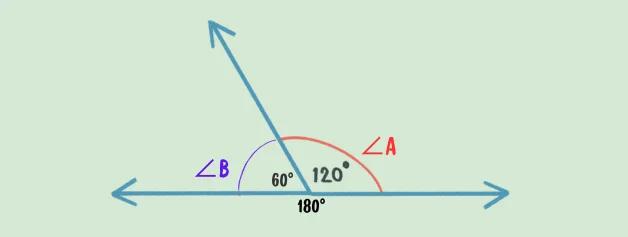Did you know that the 180-degree angle, commonly known as the straight angle, is a cornerstone in the world of geometry, influencing everything from book designs to monumental architecture? In this guide, we’ll explore this fascinating angle in-depth, offering insights perfect for parents helping their children with math homework and for anyone curious about geometric concepts.
What is a 180 Degree Angle?
Imagine two rays diverging in opposite directions, forming a perfectly straight line. This forms what we call a 180-degree angle, similar to a book laid flat open.
Characteristics of a 180-degree Angle
1. Straight Line Formation: It appears as a linear, straight path.
2. Half Rotation: This angle symbolizes a half turn in a circular path.
3. Non-Directional: Contrary to smaller angles, a 180-degree angle doesn’t point in a specific direction.
Recommended Reading: Exploring the Fascinating World of Triangle Vertices
Practical Examples of the 180-Degree Angle
Example 1: Identifying a 180-degree Angle
Scenario: Consider two adjacent angles sharing a standard arm. If Angle A measures 120 degrees, what is the measure of Angle B to make a straight line?
Solution:
- The angles must total 180 degrees.
- With Angle A at 120 degrees, Angle B is calculated as 180 degrees – 120 degrees = 60 degrees.
Example 2: 180 Degree Angles in Polygons
Scenario: Determine the sum of interior angles in a quadrilateral (a four-sided figure).
Solution:
- Divide the quadrilateral into two triangles.
- Each triangle’s interior angles total 180 degrees.
- Hence, the quadrilateral’s interior angles sum to 2 × 180 degrees = 360 degrees.
Example 3: Supplementary Angles
Scenario: Find the supplementary angle for an angle measuring 70 degrees.
Solution:
- Supplementary angles combine to 180 degrees.
- The angle’s supplementary partner is 180 degrees – 70 degrees = 110 degrees.
Recommended Reading: Understanding Axis of Symmetry
Conclusion
The 180-degree angle is not just a mathematical concept but a fundamental element in understanding the spatial and structural aspects of our world. For parents aiding their children in math homework, embracing these fundamental concepts is invaluable. Every angle has its own story, and the 180-degree angle narrates one of symmetry and transition. Dive into it, explore its applications, and let it guide you through the geometric dimensions that shape our daily lives.
Moonpreneur understands the needs and demands this rapidly changing technological world is bringing with it for our kids. Our expert-designed Advanced Math course and Math Quiz for grades 3rd, 4th, 5th, and 6th will help your child develop math skills with hands-on lessons, excite them to learn, and help them build real-life applications.
Register for a free 60-minute Advanced Math Workshop today!

















